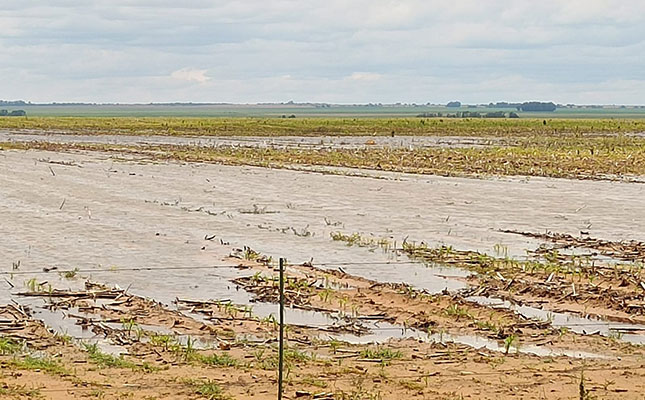
Photo: FW Archive
This was according to independent meteorologist, Johan van den Berg, who warned that “many dams are still very full after the previous two high-rainfall seasons, and therefore the [potential for] flood damage is concerning”.
“I am particularly concerned that the lower Vaal and Orange rivers could [burst their banks],” he told Farmer’s Weekly.
Van den Berg added that while the irregular periodic climate variation, the El Niño-Southern Oscillation (ENSO), was currently in a weak La Niña state, it was becoming stronger.
Therefore, he believed that most of the country’s summer rainfall regions should expect above-average rainfall between November this year and January 2023.
“This will be the third time since the 1950s that South Africa will be experiencing three La Niña seasons in a row.”
Previously, South Africa experienced three consecutive La Niña seasons between 1973 and 1975, and again between 1998 and 2001.
However, the La Niña phenomenon should start dissipating by February, and therefore slightly less rainfall would likely be experienced during the country’s autumn season in 2023 compared with the rainfall experienced this year.
While the majority of the summer rainfall regions would experiencing a wet season, Van den Berg said it was difficult to predict how the Eastern Cape’s rainfall season would unfold.
“The Eastern Cape is situated between the winter and summer rainfall regions. The Western Cape is currently moving into a drought cycle and the impact this will have on the Eastern Cape [is as yet] unknown,” he said.
“We have to keep in mind that that province has experienced both floods and droughts during La Niña seasons.”
Christo van der Rheede, executive director of Agri SA, said farmers needed to take advantage of the predicted wet weather conditions.
“We need to remember that climate forecasts remain just that – a forecast. [But] it’s a good indication and farmers need to use this as a basis when planning for the coming season. See the good rainfall as an opportunity to plant [crops].
“[During] the previous season there were many doomsday speculators who said the maize crop would fail due to too much water. Yet, we were able to harvest 15 million tons of maize,” Van der Rheede told Farmer’s Weekly.
“Our farmers have the necessary knowledge. They should use that and make informed decisions.”
Van der Rheede added that if disaster struck, farmers had to remember that Agri SA’s National Disaster Management Centre was always willing to assist them.
“We’ve helped farmers through drought, fire, and locust damage. We will not stop helping them now.”










